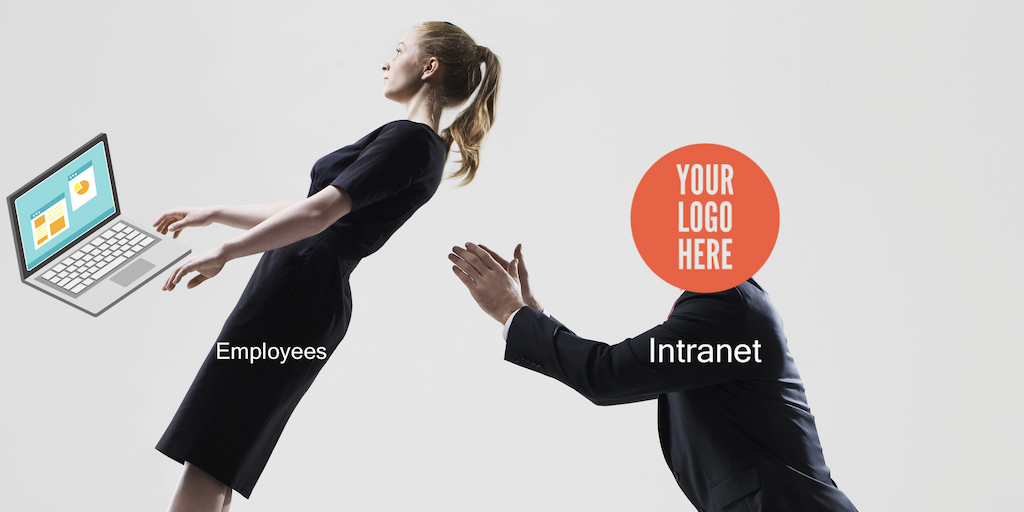Whether you’re starting fresh or migrating an existing system, figuring out how to create intranet is no small task. The good news is that the days are over when building sites and portals was a complex project achieved only by teams of elite developers. Especially with modern intranets, it’s easier than ever to build and implement a successful platform.
Historically, intranets were costly and time-consuming projects, dreaded by all involved. The architecture was confusing, the technology wasn’t consumer friendly, and deciding which content to migrate from a legacy service was a slog.
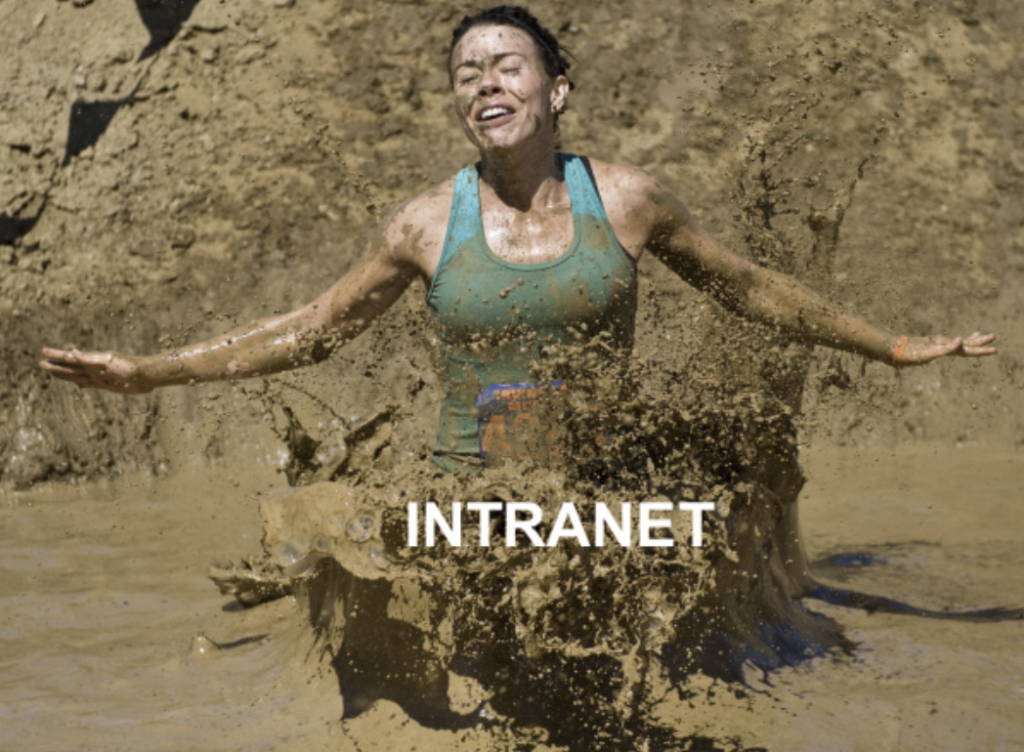
However, where old, custom, or migrated intranets would take anywhere from eight to 48 months to deploy, and demanded devoted teams, modern intranets have much faster implementation times. And the quick and lightweight approach doesn’t stop at the intranet software itself. It also involves an agile approach and mindset to create value within days or weeks, not months or years.
What is an intranet and why do you need one?
An intranet is a secure, private network used to streamline communication and collaboration within an organization. It serves as a central hub for sharing resources, improving employee engagement, and enhancing productivity.
To explore the detailed benefits of an intranet, check out this extensive blog on what an intranet is.
Cloud intranet vs. self-hosted intranet?
When creating an intranet, one of the most critical decisions you’ll face is choosing between a cloud intranet or a self-hosted intranet. This choice has a big impact on your IT resources and long-term scalability.
• Cloud intranet
Hosted by a third-party provider, this option ensures quick deployment, easier maintenance, and built-in security, allowing your team to focus on using the intranet instead of managing it.
• Self-hosted intranet
Managed on internal servers, this option offers greater control but requires significant IT support for ongoing updates, security, and maintenance.
Deciding on the hosting solution is crucial because it influences the implementation timeline and costs. For more on cloud intranets, read our cloud intranet guide.
How to create an intranet?
Creating an intranet involves a series of steps, each tailored to your company’s unique needs. Here’s a breakdown of the process:
1. Identify your purpose
People use intranets for many different reasons, and to achieve different business goals. In the mid-’90s, for example, they were simple, go-to internal web pages for links and resources with the goal of improving internal organization.
These days, business owners demand much more from their intranets — for example, employee journey mapping — and there are many more benefits.
The latest iteration of intranets, known as “Employee Experience Intranets,” serve businesses four key benefits, particularly as they relate to the lasting workplace changes wrought by Covid-19.
These include:
- Keeping All (Even Dispersed) Employees Engaged
- Creating a Trusted Employer Brand
- Supporting Knowledge Management & Productivity
- Improving the Employee Experience
These points alone show that modern intranets have a specific target in mind: the employee. So, if persona-based intranets are the future, the purpose of your intranet must be to prioritize employees.
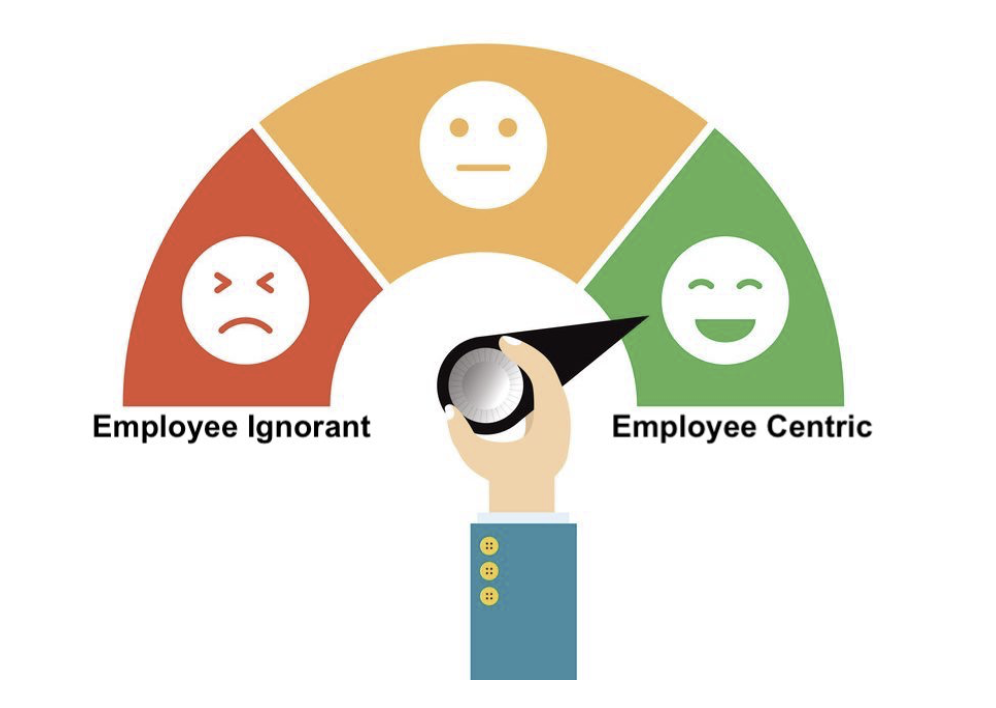
2. Assign ownership
Designate a team or individual to oversee the intranet’s development and maintenance. This ensures accountability and helps keep the intranet evolving to meet the company’s needs.
3. Build a business case
Any major intranet investment requires a clear business case. Without a strong value proposition, it’s easy to lose focus in the planning process and stumble when pitching to the boardroom.
How much does it cost to build an intranet? The costs vary depending on the type of intranet—cloud-based or self-hosted. Cloud intranets typically have lower upfront costs but may involve subscription fees, while self-hosted intranets require larger initial investments for infrastructure and ongoing IT support. Consider these factors when presenting your budget.
The global pandemic was a wake-up call for organizations that suddenly found themselves in need of a fast and effective way to get vital information to dispersed workforces. This will ultimately also change the business case discussion because intranets are:
• A vital part of reaching every employee with internal updates
• A consistent and authoritative resource to keep everyone equally informed
The latest entrants to the intranet space — or Employee Experience Intranets — occupy the sweet spot of simplicity and collaboration between “social intranets” and products like Microsoft’s Sharepoint. These modern, mobile intranets feature real-time communication capabilities such as push notifications, making the immediate reception of important information possible anytime and anywhere. Push boosts employee app engagement by 88%, and 65% of users return to an app when push is enabled.
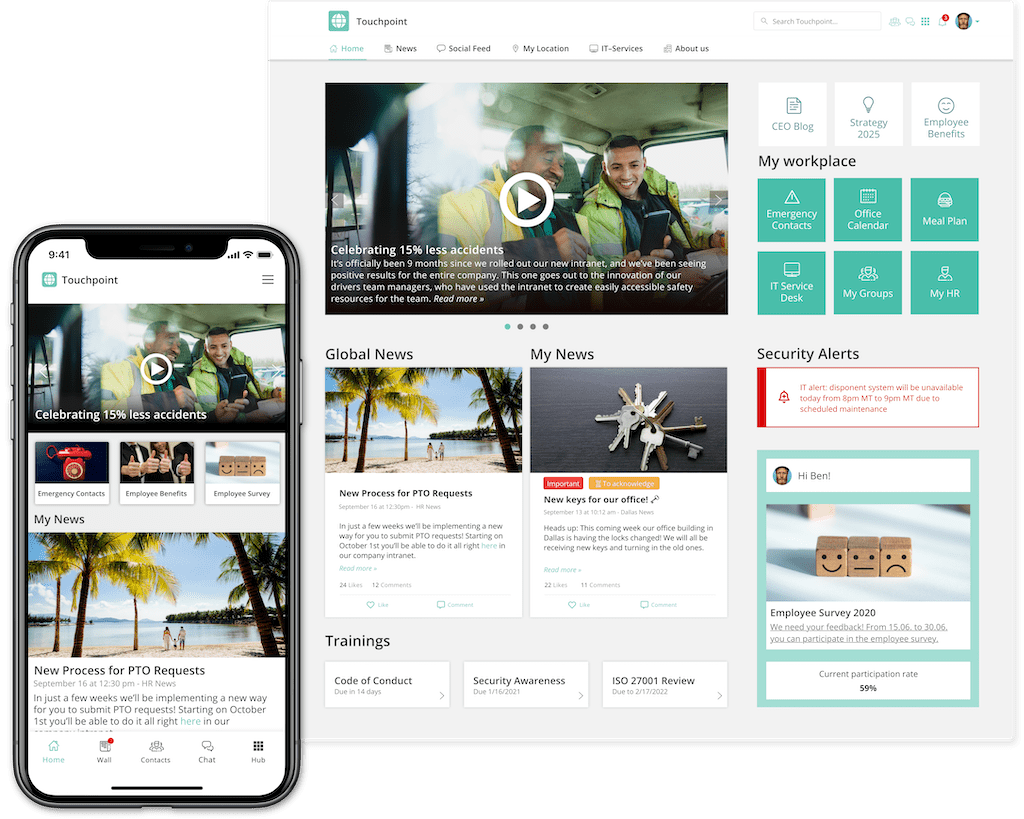
In other words, collaboration and teamwork are no longer just a core task of modern intranets—they enhance the overall employee experience.
It’s also not a bad idea to audit the digital workplace systems you already have in place. Given that the best modern intranet software is especially focused on communication, we advise running a communications audit fairly early on in the decision-making process. You can find our guidelines for such an audit here.
4. Decide how to host the intranet
Revisit the decision to go with a cloud or self-hosted solution based on your company’s long-term goals and available resources.
5. Select an Intranet Software Provider
The right software provider can make or break your intranet’s success. Look for a provider that meets your requirements for scalability, ease of use, and mobile access.
6. Migrate or create content
When new intranet products require migrating content from legacy infrastructure, some businesses make the mistake of considering all content on their current system equally valuable. This leads to the ill-informed conclusion that the answer to the question of how to create an intranet involves migrating all existing content to the new system.
This is very inefficient, no matter how advanced of an intranet product you’re using.
Instead, consider this a rare opportunity to do some serious spring cleaning. Because searchability is an essential function of intranet usability, clearing out the junk and clutter of an older platform is actually one of the greatest opportunities to improve usage.
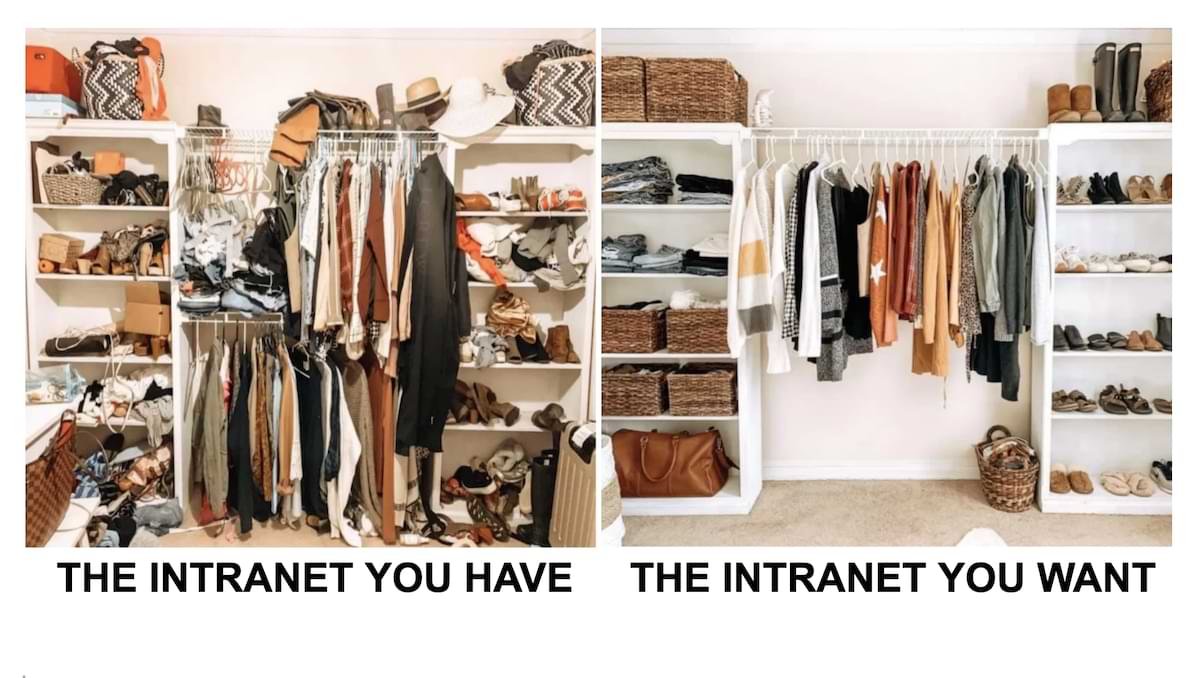
By failing to organize transferred knowledge, companies risk poor adoption and bloating that defeats the intent of the original plan or redesign.
To avoid this…
- Take inventory
- Audit your content (aka what needs to be transferred)
- Draft your new intranet navigation structure
- Migrate!
7. Create a design reflecting your brand
The brand is among the most important aspects of a company, evident in everything they do. From the website to the letterhead, a reminder of it should be present everywhere.

The intranet is no exception, as internal branding is crucial to the success of a company. Brands create trust. A well thought-out internal branding strategy can strengthen this trust and turn employees into brand ambassadors. The intranet is a central platform that must capitalize in particular on internal branding. This will help orient employees, create emotional loyalty, and augment the external brand.
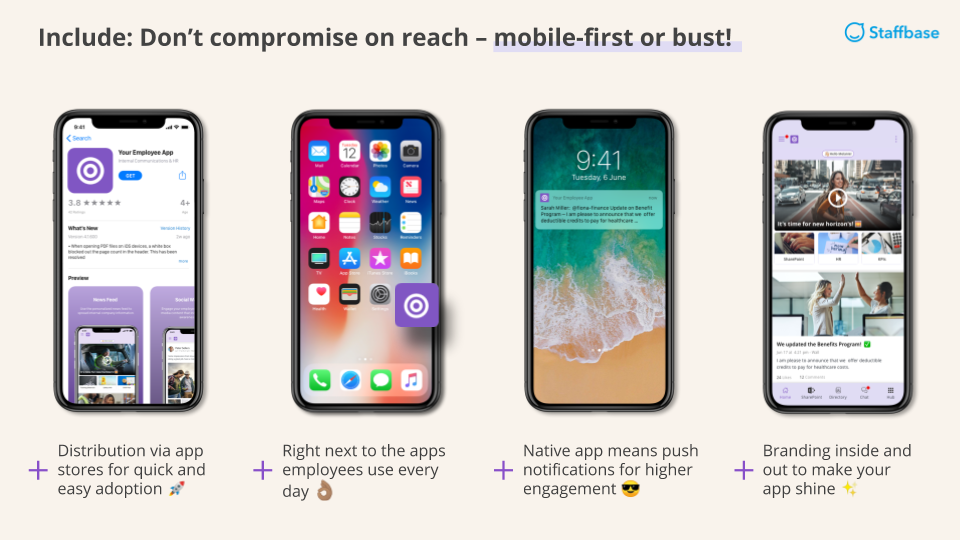
So, when your deciding on something as seemingly trivial as choosing logos, color schemes, and names for your intranet, don’t skimp.
Consider the image below. How many different brand names and fonts can you identify? Even something as simple as a single letter can have deep brand implications.

8. Set up a user-friendly homepage
The homepage should be easy to navigate, providing quick access to the most important tools and information.
9. Test your intranet
Before the official launch, test the intranet with a small group of employees to catch any issues and gather feedback.
10. Develop a launch strategy
The process of how to create an intranet and launch it for an organization can present a number of challenges, although the benefits of a successful launch make it all worthwhile. A well-planned and executed launch ensures users:
- are excited and engaged
- are informed about what is happening, and when
- understand the value of their new intranet
- know what the intranet is used for, and how it will impact and improve their day-to-day roles
- adopt and continue to engage with the intranet from day one and beyond


One more idea for a sparkling launch delivered by Staffbase: “Joyful Animations.” Animations are easy to add to any article and will automatically play when an employee opens a post — no graphic design or coding skills needed. So, it’s simple to put a festive touch on your launch messages!
Best practices for building an intranet
Building an intranet goes beyond its technical aspects. Here are some best practices to ensure its success:
• Mobile accessibility is a must: With more employees working remotely, having a mobile-friendly intranet is crucial. A mobile-optimized intranet ensures employees can access important information anytime, anywhere. Learn more about the importance of mobile access with the Staffbase employee app.
• Focus on user experience: Make your intranet intuitive and easy to navigate. If it’s difficult to use, employees will avoid it, regardless of its features.
• Encourage engagement: Incorporate features like discussion boards and social tools to foster employee interaction and collaboration.
Most common mistakes to avoid while creating an intranet
Here are a few common pitfalls that can hinder your intranet’s success:
• Skipping a content management system (CMS): Without a CMS, it becomes difficult to keep your intranet updated and organized. Ensure your solution includes a user-friendly CMS for easy content management.
• Choosing a self-hosted intranet without sufficient IT resources: A self-hosted intranet can be resource-intensive. Make sure you have a robust IT infrastructure if you choose this option.
How to easily create an intranet with Staffbase
Staffbase simplifies the intranet creation process, making it accessible for non-technical users. With a range of features like a user-friendly CMS, mobile accessibility, and branding options, Staffbase empowers you to build an intranet that enhances internal communication without the technical headaches.
Request a demo today to see how easily you can get started with a Staffbase-powered intranet.
